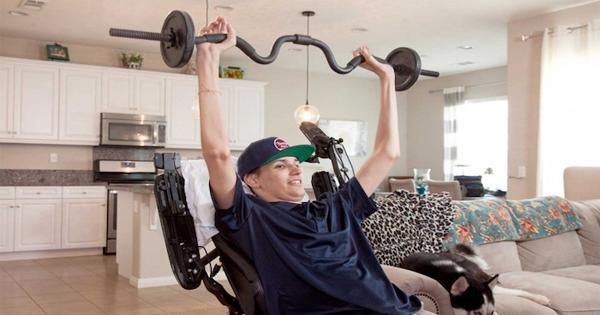Advertisement
When Kristopher Boesen was driving home one day, his car lost traction on a slippery road. He lost control and the vehicle ended up slamming into a tree and a lamp post. When he woke in the hospital the following day, his doctors told him the crash had left him paralyzed from the neck down.
There was a chance he would never move his body ever again.
It wasn’t until several years later that Boesen was offered a potentially life-changing treatment.
Dr. Liu said there was a chance Boesen could regain the mobility of his lower body with appropriate stem cell treatment. Injecting stem cells into Boesen’s body could give it “the capability to repair injured nervous tissue through replacement of damaged cells.”
Boesen was warned that this procedure didn’t come with any guarantees, but Boesen was willing to take any risks they could, in any way, improve his mobility.
In April this year, Dr. Liu injected 10 million AST-OPC1 cells into Boesen’s spinal cord, hoping that the cells would “improve neurological function” in his body.

This process “could mean the difference between being permanently paralyzed and being able to use one’s arms and hands. Restoring that level of function could significantly improve the daily lives of patients with severe spinal injuries,” Liu explained.
Although doctors kept warning Boesen there was a chance nothing would change in his life, after just three weeks of physical therapy, he was already showing signs of improved movement.
Two months later, Boesen was able to answer the phone, write his name, and operate his own powered wheelchair.
There’s still a long road ahead of Boesen for his potential recovery, but he’s already thrilled with the progress he’s made. “All I’ve wanted from the beginning was a fighting chance…But if there’s an opportunity for me to walk again, then heck yeah! I want to do anything possible to do that,” he said.
In spite of this success, Dr. Liu is reluctant to make any further promises about Boesen’s improvement.
Because there has only been limited research on this procedure, no one knows how stem cell treatment procedures will look in just a few years’ time, but everyone – especially Dr. Liu and Boesen – are eager to see what the future holds.




